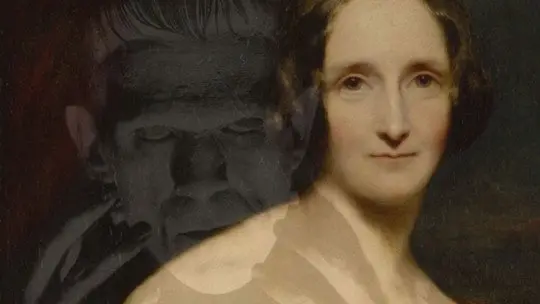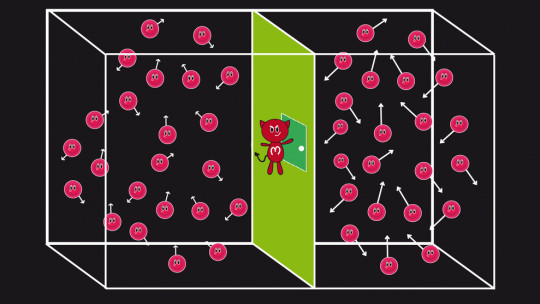Isaac Asimov, George Orwell, Herbert George Wells and many more science fiction writers have captured, in their works, dystopian worlds, in which almost paranormal and unthinkable phenomena fill the pages of their books.
However, it is Arthur C. Clarke, British writer and scientist, who captured three laws that tried to predict and explain how scientific advances would occur in the future so that today at the time it would be seen as something typical of science fiction.
For him, words like ‘impossible’ or ‘unthinkable’ were nothing more than illusory limitations, given that science, whether human or extraterrestrial, will advance in any case, although we with our current mentality cannot even hope to do so. imagine.
Next we will see Clarke’s laws in addition to explaining the importance of this very particular English writer.
Who was Arthur Clarke?
Sir Arthur C. Clarke (1917-2009) was a British writer and scientist who, with his great capacity for inventiveness and imagination, made predictions about what the future of humanity would be like and, also, what the civilizations of intelligent extraterrestrial species could be like.
Speaking very briefly about his life, we can say that from a young age he showed interest in astronomy, going so far as to make his own maps of the sky using an improvised homemade telescope. During the Second World War he became a radar technician, serving in the British Air Force and contributing to the development of a defense system.
At the end of the conflict he wrote an article called Extraterrestrial Relays (1945), in which he explained how artificial satellites could facilitate communications around the world, orbiting our planet and emitting waves instead of sending information through cables. It is this article that brought him great fame, naming the geostationary orbit as the ‘Clarke orbit’ in his honour.
He is considered one of the great science fiction writers , at the level of great names such as Isaac Asimov, creator of the three laws of robotics or George Orwell, who predicted how new technologies could end up controlling public opinion. In his works he expressed his particular vision of the future, being the author of books such as * El sentinel * (1951), a book that inspired the filming of 2001: A Space Odyssey (1968) by Stanley Kubrick, and Date with Rama (1972).
Clarke’s laws
There are three laws that Clarke postulated, making a kind of prediction of how technological progress would occur in humanity. These laws, although they may seem quite obvious to us in the world in which we live, with all types of technology that is advancing and updating at a dizzying rate, were something that ordinary people were incapable of conceiving during the first half of the 20th century. . But Clarke was no ordinary person.
1. Clarke’s First Law
Throughout his works he formulated his three laws, which became famous over time. The first law made its debut in the essay Hazards of Prophecy: The Failure of Imagination (1962). This law says:
“When an old and famous scientist says something is possible, he is probably right. But when he says it is impossible, he is probably wrong.”
Currently, Many scientists, such as Michio Kaku or the late Stephen Hawking, agree with this law It is believed that most science fiction inventions are possible and will one day become a reality.
The paradox of this is that, in addition to agreeing with this law, Stephen Hawking was an example of when a very famous scientist errs by assuming that a specific scientific advance will not be achieved. A few years ago, in 2013, the Higgs boson was discovered, a particle that Hawking argued would never be found, and that if it were found, this particle would have unimaginable destructive power.
Almost seven years have passed and, so far, such a particle has not shown itself to be a weapon of mass destruction nor have any worrying incidents occurred.
2. Clarke’s Second Law
Clarke’s second law appeared in a revised edition of his book Profiles of the future (1973). This law is a little more dynamic than the previous one, which postulates:
“The only way to find the limits of the possible is to go beyond those same limits, and delve into what we believe is impossible.”
More than a law, this postulate It is an invitation for research not to stop, for science to continue trying to describe reality in the best way and modify it according to general interests.
There are many things that until relatively recently seemed impossible, such as flying on a plane, having a video call while being separated by half a planet or treatment for cancer.
3. Clarke’s third law
But the best known of Clarke’s laws is his third and last law, formulated much later than the previous two. With surprising confidence for a person of his time, Clarke stated:
“Any sufficiently advanced technology is indistinguishable from magic.”
In saying this, Clarke had to keep in mind that any civilization, be it the human one of the future or one of extraterrestrial origin These civilizations could have had enough time to have developed technology that, even to us in the decade we live in, would seem like something from a JK Rowling book.
Also, if we look at ourselves, we can understand that, if we managed to travel to the past and show the people of the Middle Ages our electronic devices, they would surely think that they were witchcraft, no matter how much scientific explanation we gave them. Even When television was invented, no more than 80 years ago, there were those who were convinced that tiny people were inside that device which could not be art of electricity and a screen with lights.
Once his third law was postulated, Clarke stopped saying anything new regarding this issue. The scientist was modest, and considered that if three were enough laws for Isaac Newton, three would also be enough for him.









